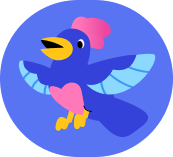Learning approaches
Cards (24)
- Behaviourists say that all behaviour is learnt:
- Classical conditioning - learning through association
- Operant conditioning - learning through reinforcement
- Social learning theory - learning through observation
For purpose of approaches paper 2 - behaviourism will only cover classical conditioning and operant conditioning - Tabula rasaWe are born as a 'blank slate' - therefore we learn through experience
- Assumptions
- Born as a 'blank slate' - tabula rasa
- Extreme 'nurture' end of nature- nurture debate
- Argues that in order for psychology to be scientific, it should focus on observable behaviour which can be objectively measured, rather than on things like cognitive processes which can only be inferred - rejected idea of introspection
- Lab exp are the best ways to achieve this
- Classical conditioning - pavlovLittle albert (watson and rayner) 1920
- How it works...Before conditioning:Bell (neutral stimulus) -> dog - nothingFood (unconditioned stimulus) -> dog - salivation (unconditioned response)Bell: neutral stimuli (NS)Food: unconditioned stimulus (UCS)Salivation: unconditioned response (UCR)
- During conditioning:Bell (neutral stimulus) + food (unconditioned stimuli) -> dog - salivation ( unconditioned response)Bell: neutral stimuli (NS)Food: unconditioned stimuli (UCS)Salivation: unconditioned response (UCR)
- After conditioning:Bell (conditioned stimulus) -> dog - salivation (conditioned response)Bell: conditioned stimulus (CS)Salivation: conditioned response (CR)
- Little albert:Before conditioning:Rat (neutral stimulus) -> nothingNoise (unconditioned stimulus) -> fear (unconditioned response)
- During conditioning:Rat(neutral stimulus) + noise(unconditioned stimuli) -> fear (unconditioned response)
- After conditioning:Rat(conditioned stimulus) -> fear (conditioned response)
- ExtinctionPavlov discovered that unlike the unconditioned response, the conditioned response does not become permanently established as a response. After a few presentations of the conditioned stimulus in the absence of unconditioned stimulus it loses its ability to produce the conditioned response.
- Spontaneous recoveryFollowing extinction, if the conditioned stimulus and unconditioned stimulus are then paired together once again, the link between them is made much more quickly.
- Stimulus generalisationPavlov discovered that once an animal has been conditioned, they will also respond to other stimuli that are similar to the conditioned stimulus
- Operant conditioning - skinner
- ReinforcementSomething in the environment that strengthens (or reinforces) a particular behaviour and so makes more likely to recur
- Positive reinforcementRewarding every time after a specific behaviour
- negative reinforcementthe idea of taking away an unwanted stimulus in order to encourage good behavior
- SLT (social learning theory) - learning through observationspsychologist - Bandura
- why is SLT different to conditioningSLT is not about learning, it involves cognitive processes such as watching, paying attention, remembering, choice of role models
- (ao1) social learning theory
- people learn behaviour through observation and imitation of others
- suggests learning happens through indirect reinforcement
- vicarious reinforcement happens through observing someone else being reinforced for their behaviour
- process of SLT4 mediational processes in learning: (ARMM acronym)
- Attention - the extent to which we notice certain behaviours
- Retention - how well behaviour is remembered
- Motor reproduction - the ability of observer to perform the behaviour
- Motivation - the will to perform the behaviour, which is often determined by whether the behaviour was rewarded or punished
- identification
- people are much more likely to imitate the behaviour of people they identify with (role model)
- process is called modelling
- a person becomes a role model if they are seen to possess similar characteristics to the observer and/or are attractive and have high status
- summary:classical (pavlov) - learning through association directly - the association is formed by youoperant (skinner) - learning through consequences directly. you are on receiving end of reinforcement/punishmentSLT (bandura) - learning through imitation. this is indirect as you are watching what happens as a result of someone else's behaviour
- bandura agreed with behaviourists that we learn directly from experience through classical and operant conditioninghowever, argued we also learn indirectly by observing, imitating others, especially if others appear to be rewarded for their behaviour
